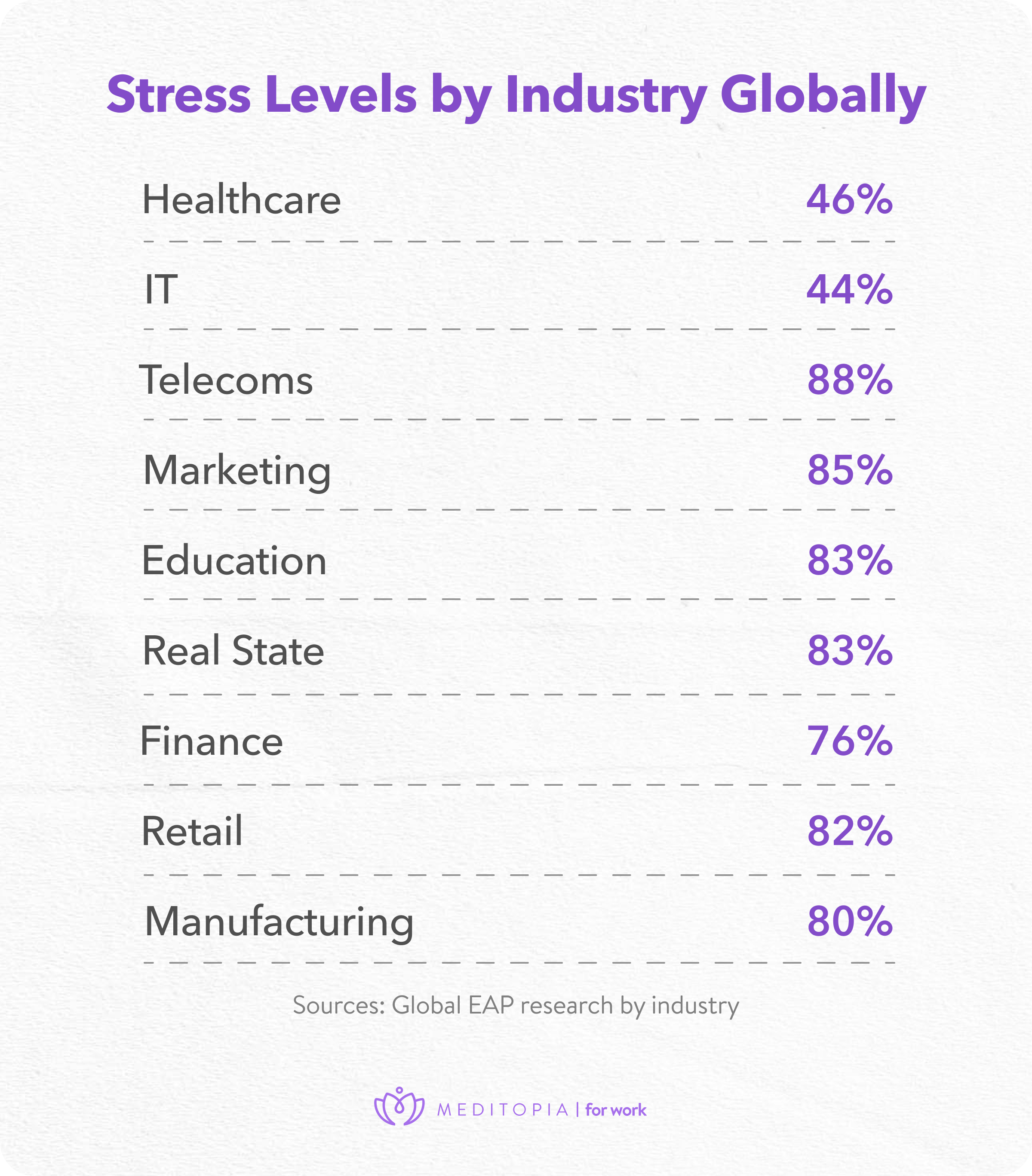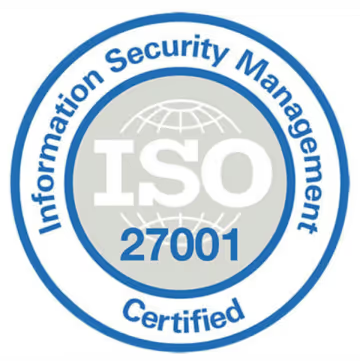According to the American Psychological Association, 77% of employees report experiencing work-related stress, with high-stress sectors showing the steepest rise in burnout and absenteeism [1]. This is where Employee Assistance Programs for stress management come in: structured, scalable systems that help organizations prevent crises, build emotional resilience, and protect mental health.
Why High-Stress Industries Need Specialized EAPs
High-stress industries operate in perpetual urgency where mistakes cost lives, money, or reputation. Employees in these sectors face constant cognitive and emotional strain, making employee stress management not just a benefit but a business necessity. Without targeted corporate mental health programs, unmanaged stress leads to:
- Burnout and emotional exhaustion, especially among healthcare and tech professionals.
- Higher turnover and absenteeism stress accounts for nearly 50% of all lost working days in the UK [2].
- Lower productivity and presenteeism, chronic stress impairs attention and decision-making.
- Reduced engagement and morale, ultimately impacting customer experience and business outcomes.
Specialized EAP stress management solutions adapt to these realities. They combine psychological insight, scalable access, and sector-specific support that goes beyond traditional counseling, helping prevent burnout before it spreads through the organization.
Common Stress Challenges in High-Stress Industries
Every industry experiences stress differently but high-stress sectors share recurring psychological and operational patterns. These are the most common workplace stress support challenges:
- Extended working hours and unpredictable shifts:
Healthcare, logistics, and manufacturing workers often operate under circadian disruption, which increases cortisol and impacts long-term health. - Emotional labor and exposure to trauma:
In caregiving or customer-facing roles, employees must display calmness while suppressing distress, a proven trigger for compassion fatigue and emotional burnout. - High accountability and perfection pressure:
Financial professionals, engineers, and executives often face zero-error environments, leading to performance anxiety and over-identification with results. - Rapid technological change and job insecurity:
Tech and media workers experience continuous upskilling demands, role ambiguity, and fear of redundancy, major drivers of chronic anxiety. - Hybrid and remote stressors:
In digital work cultures, boundaries blur between work and rest, weakening psychological recovery cycles. - Crisis response environments:
Industries like aviation, emergency services, or defense experience sustained hyperarousal, which without intervention, leads to PTSD-like symptoms.
Addressing these patterns requires not only individual coping mechanisms but also systemic organizational solutions, which is precisely what a well-designed EAP for stress provides.

How EAP Solutions Address Stress, Burnout, and Depression
A well-structured EAP stress management program works as an ongoing system for prevention, early intervention, and recovery. In fact, they are grounded in behavioral science, so these programs combine counseling, coaching, and resilience training to reduce employee stress, burnout, and depression across high-stress industries. Here's the data:
- Confidential Counseling and Virtual Employee Counseling:
- EAP counseling helps employees reframe stress perceptions, enhance emotional regulation, and build coping strategies.
- A Harvard Business Review analysis found that organizations offering structured EAP counseling reported up to 70% reductions in anxiety and work-related distress within the first 3 months of use [3].
- 24/7 Crisis Support for High-Stress Roles:
- In industries like healthcare, logistics, or customer service, round-the-clock access is crucial.
- 41% of EAP sessions occur outside standard office hours, showing the need for continuous accessibility [4].
- Mental Health Coaching for Employees:
- Mental health coaches teach cognitive restructuring, stress tracking, and self-compassion techniques.
- Companies integrating coaching into corporate mental health programs saw a 32% boost in emotional resilience and 25% improvement in work engagement [5].
- Employee Resilience Programs and Preventive Tools:
- Proactive programs, such as mindfulness, breathing exercises, or psychoeducation, reduce absenteeism and presenteeism.
- In fact, research suggests that every $1 invested in workplace mental health returns $4 in productivity through improved focus and reduced turnover [6].
- Support for EAP Stress Leave and Reintegration:
- Structured reintegration plans, including counseling and gradual workload reintroduction, prevent relapse and sustain recovery.
- 82% of employees using EAPs for stress leave successfully returned to work within six weeks, compared to 47% without structured support [7].
- Data-Driven Prevention and Scalability:
Top EAP Solutions for Stress Management
Modern organizations need flexible, tech-enabled, and global providers that merge human expertise with digital scalability. Below is a list of leading EAP stress management solutions designed for high-stress industries.
Building a Stress-Management EAP Plan for Your Team
So, now you know how stress management EAPs work, but what ca managers, leaders, and HR professionals do to build a robust and personalized program for their unique worforces needs? Let's check it:
- Assess your team’s stress landscape: Conduct mental health surveys and identify high-risk groups (e.g., frontline staff, management, remote workers).
- Define goals and metrics: Set clear objectives, such as reducing absenteeism or improving engagement, and measure outcomes through usage analytics and feedback.
- Select a scalable and inclusive EAP solution: Choose providers that integrate virtual employee counseling, resilience programs, and AI-based monitoring for large or distributed teams.
- Train managers as mental health advocates: Equip leaders with tools to recognize early warning signs of burnout or depression.
- Launch an internal awareness campaign: Normalize conversations around mental health and highlight confidentiality to increase uptake.
- Monitor engagement and ROI: Addressing manager burnout alone can raise productivity by up to 23%. Regularly evaluate your EAP’s financial and emotional returns.
Consider also the language and location of your team. Corporations in Indonesia, Dubai, the UK, the Netherlands, Greece, and Japan have specific needs due to cultural and legal contexts, and a good assistance program must be aware of them.

























